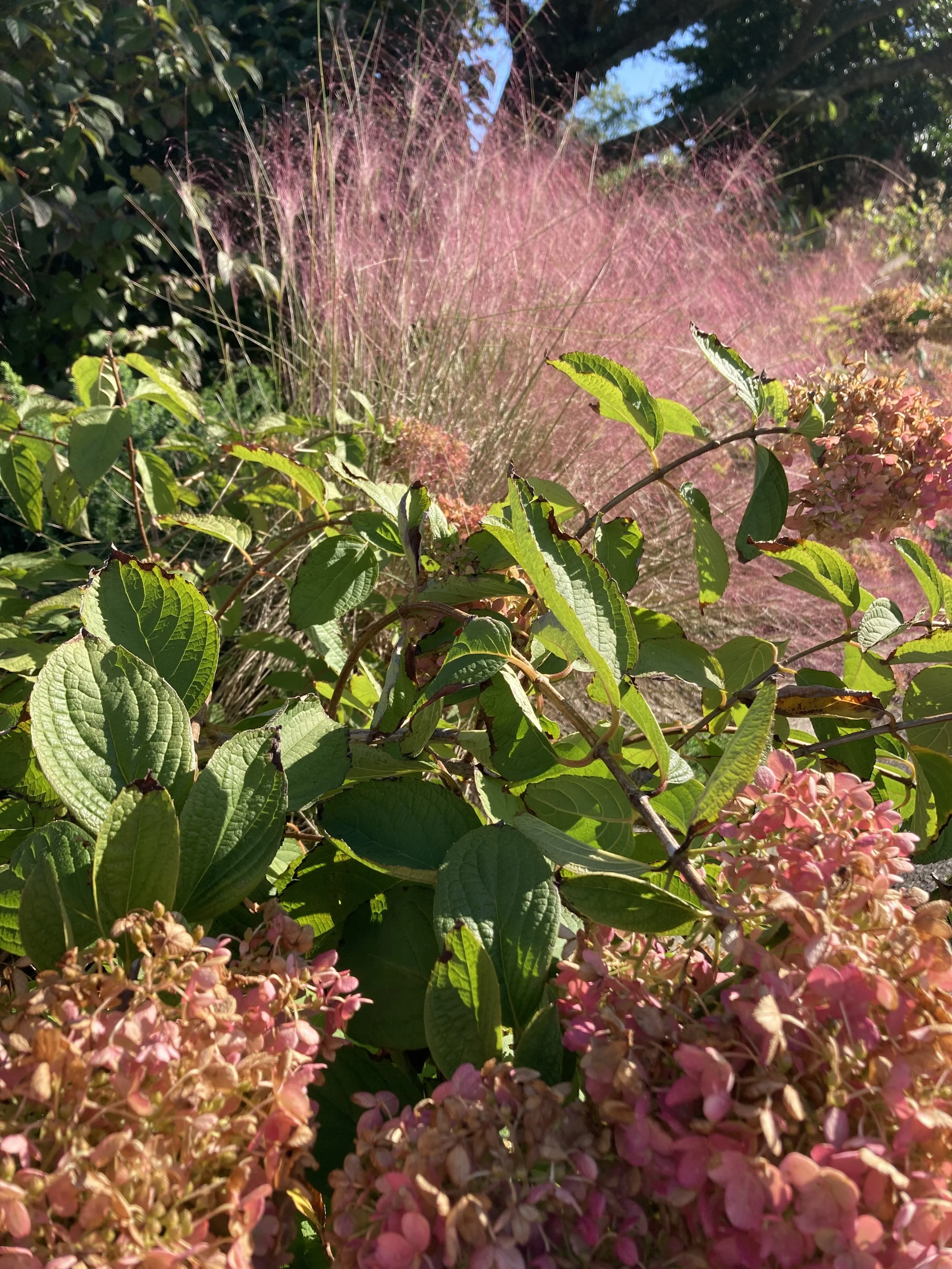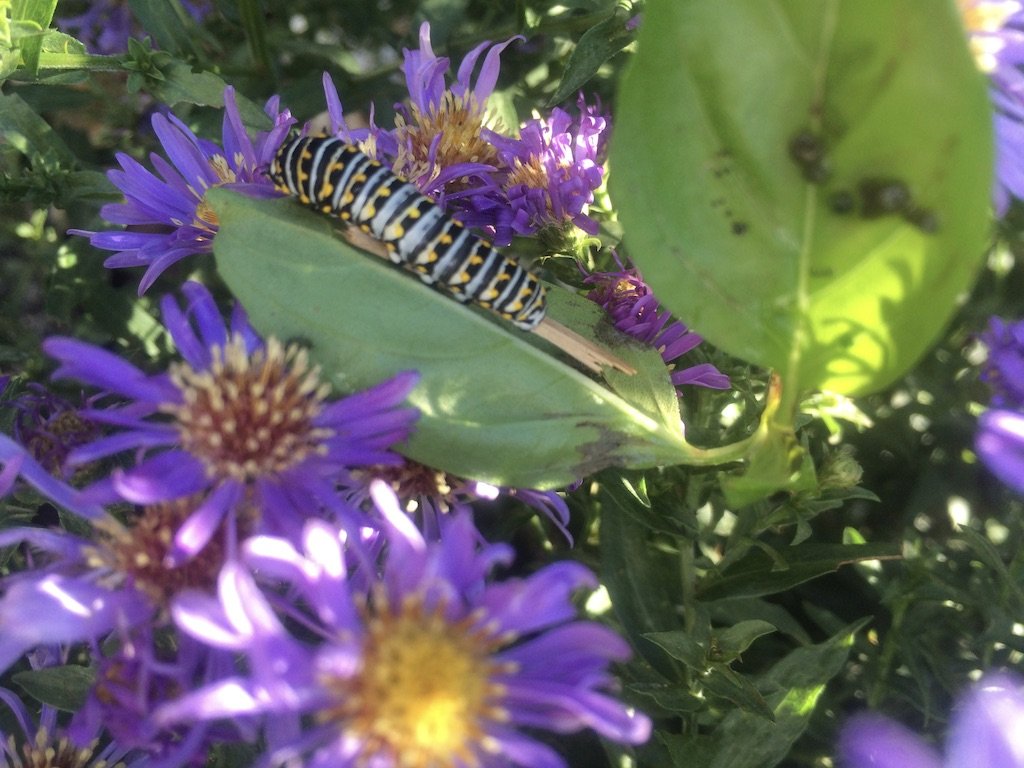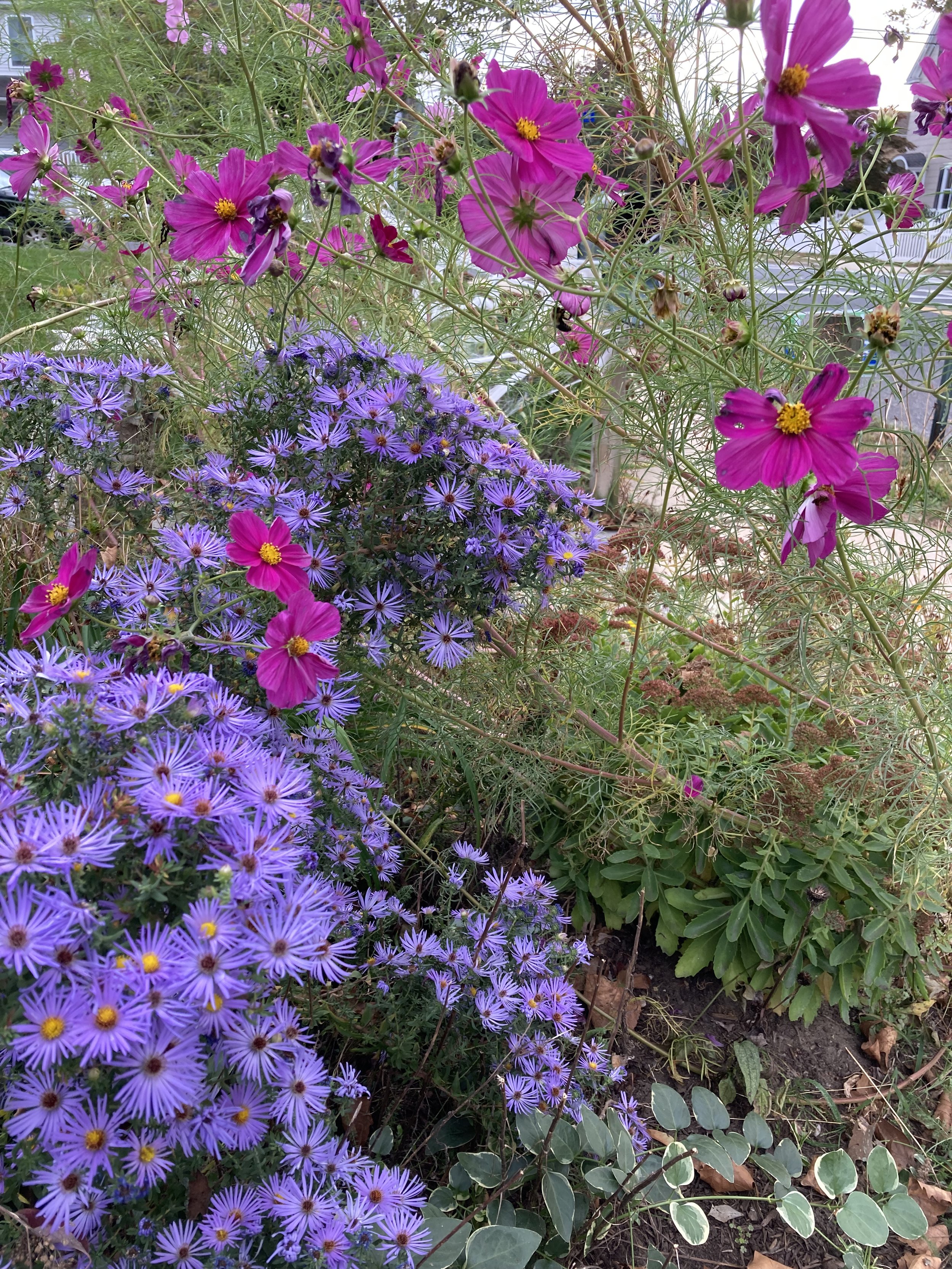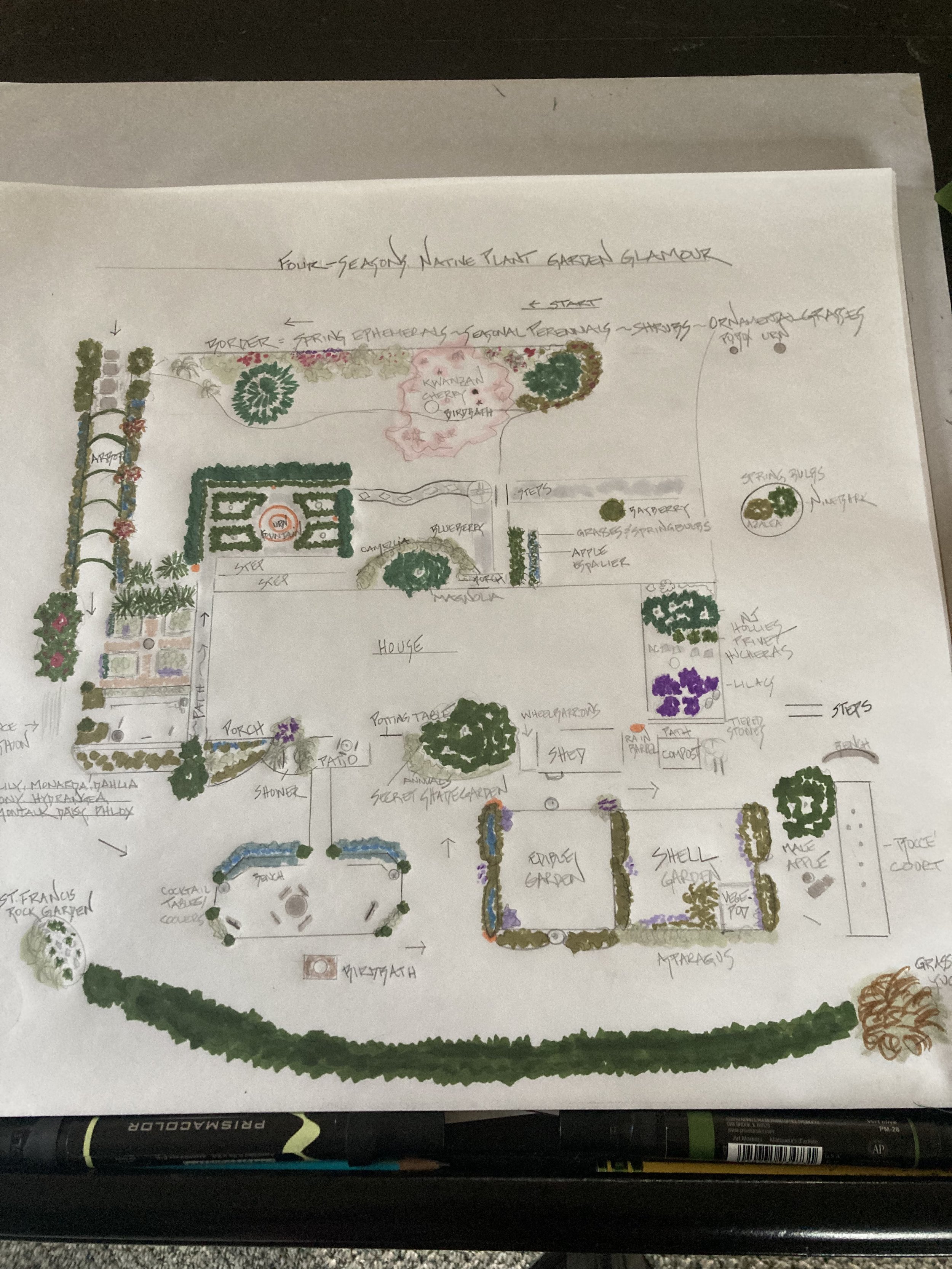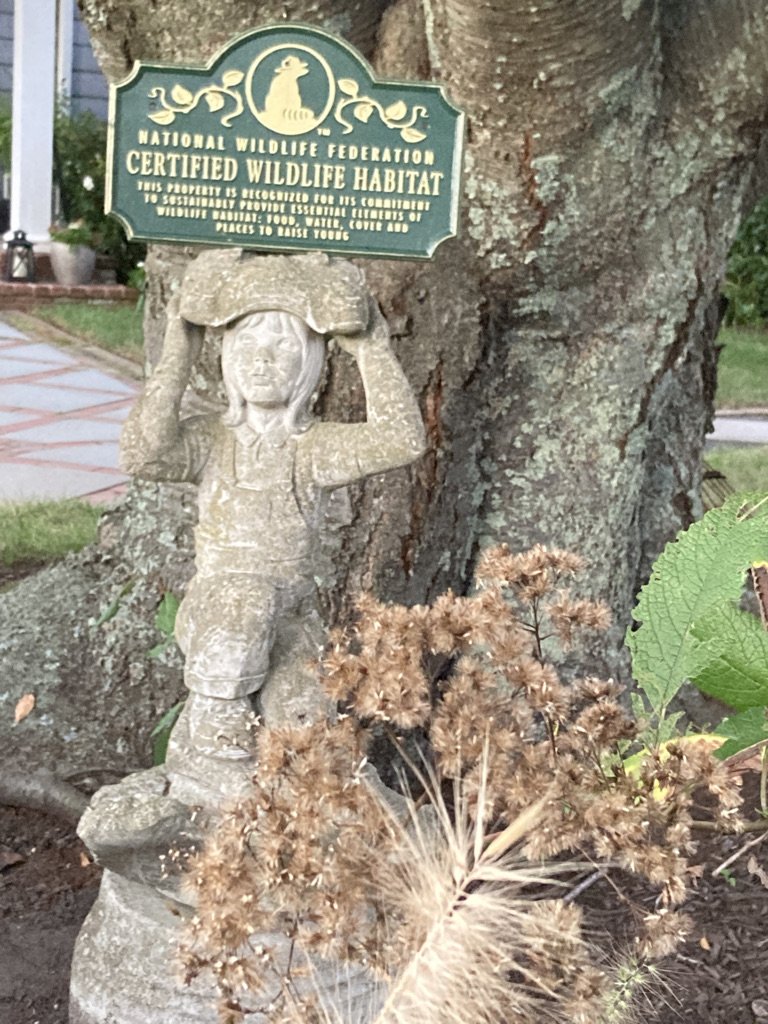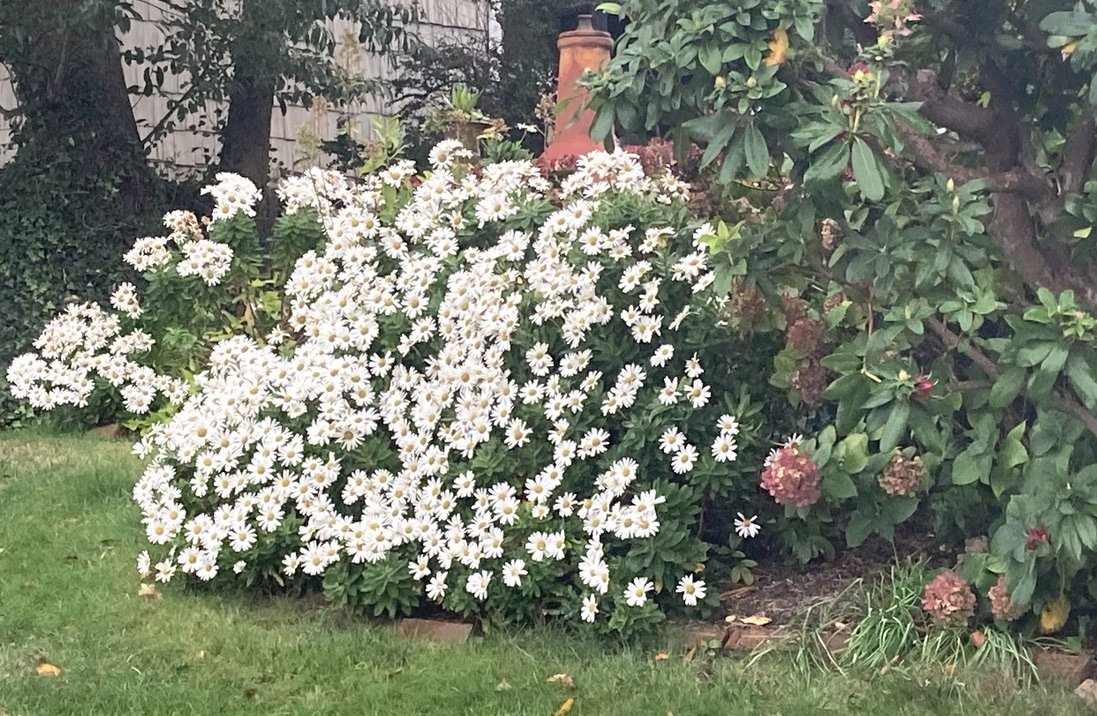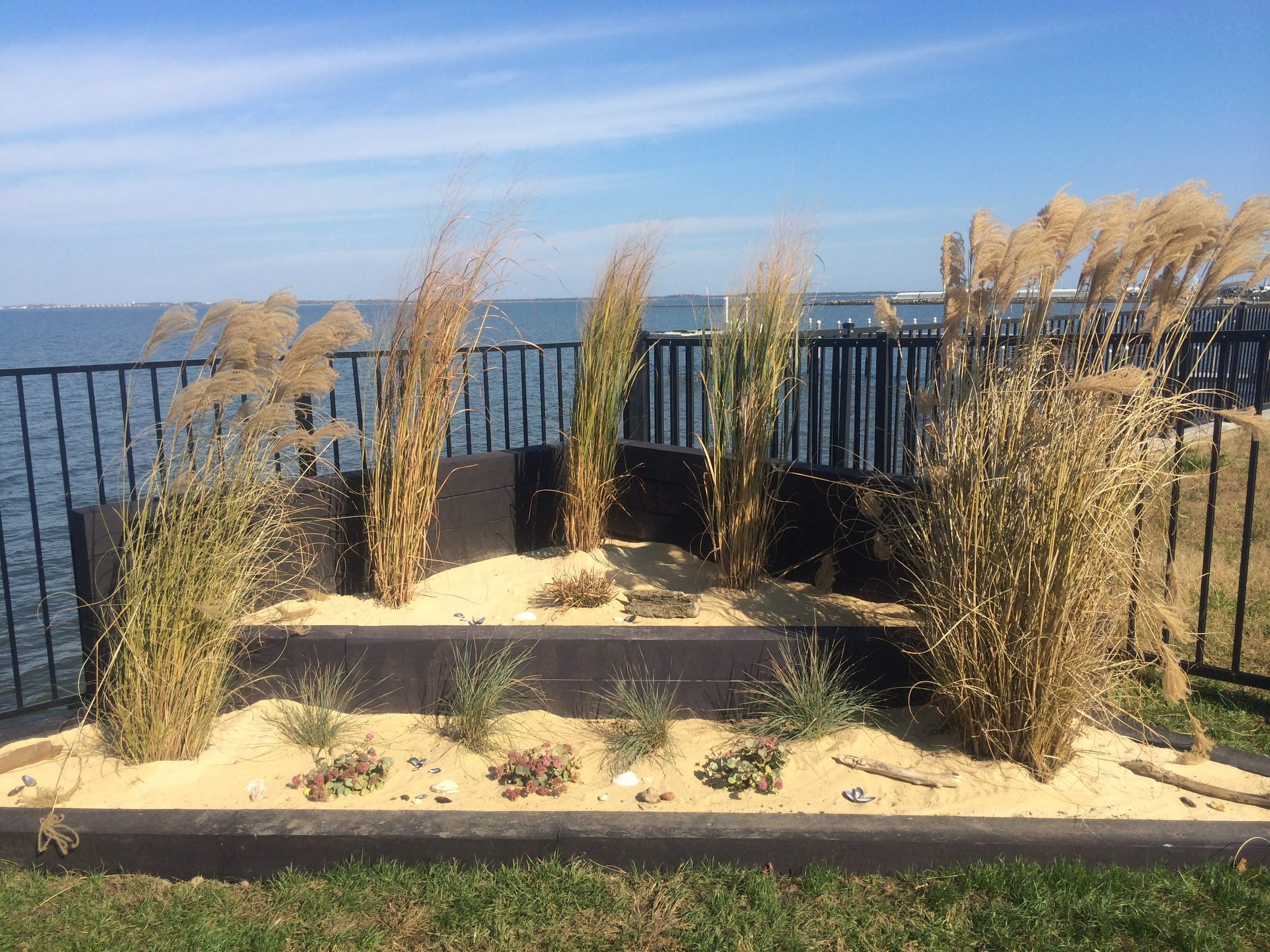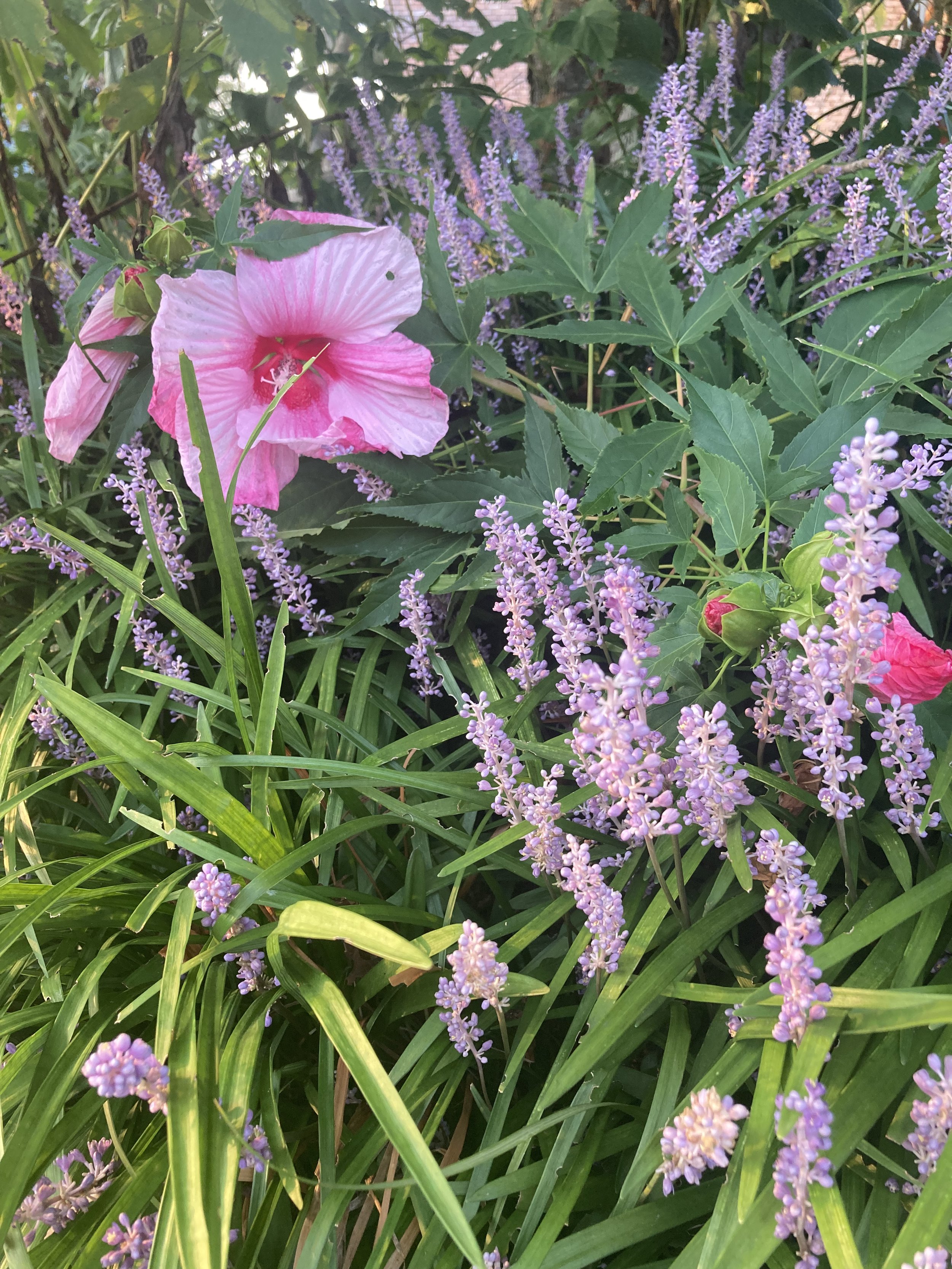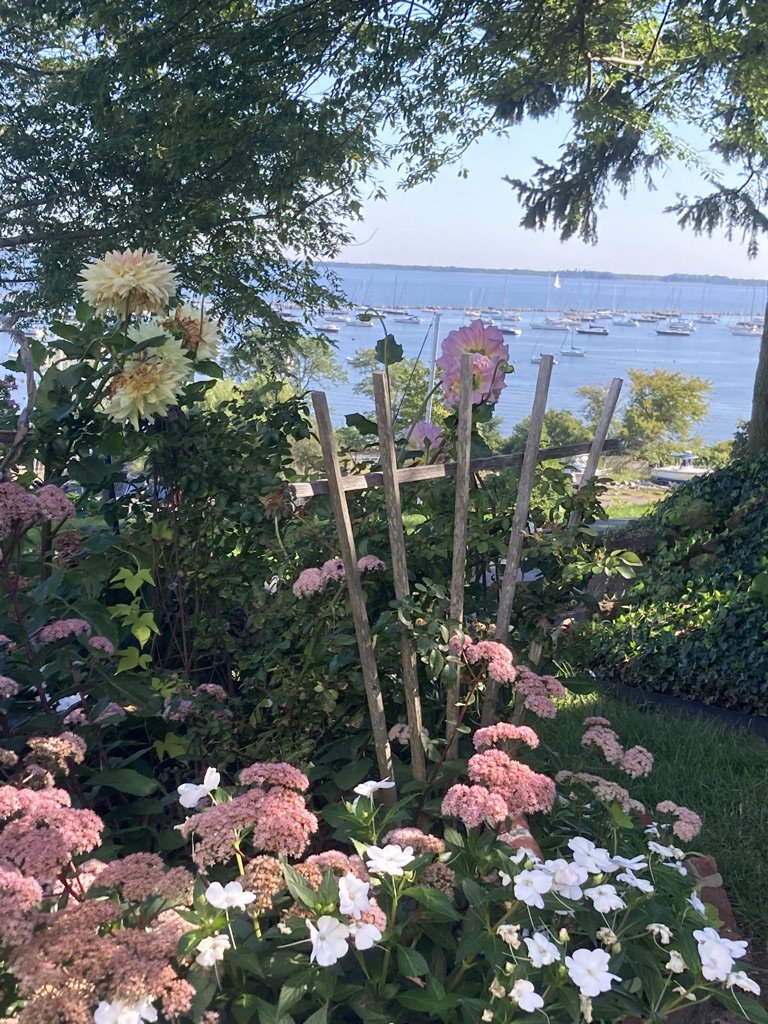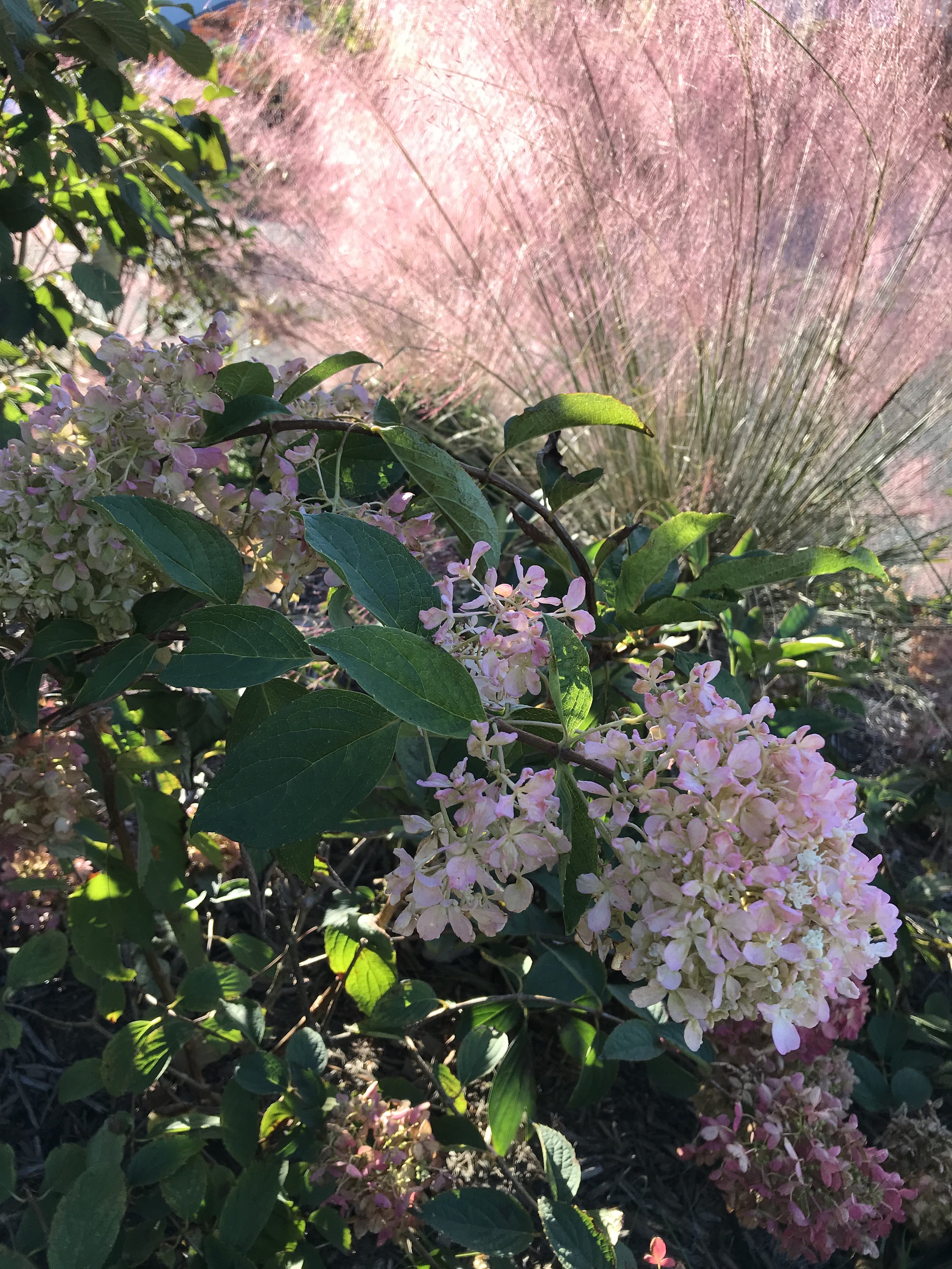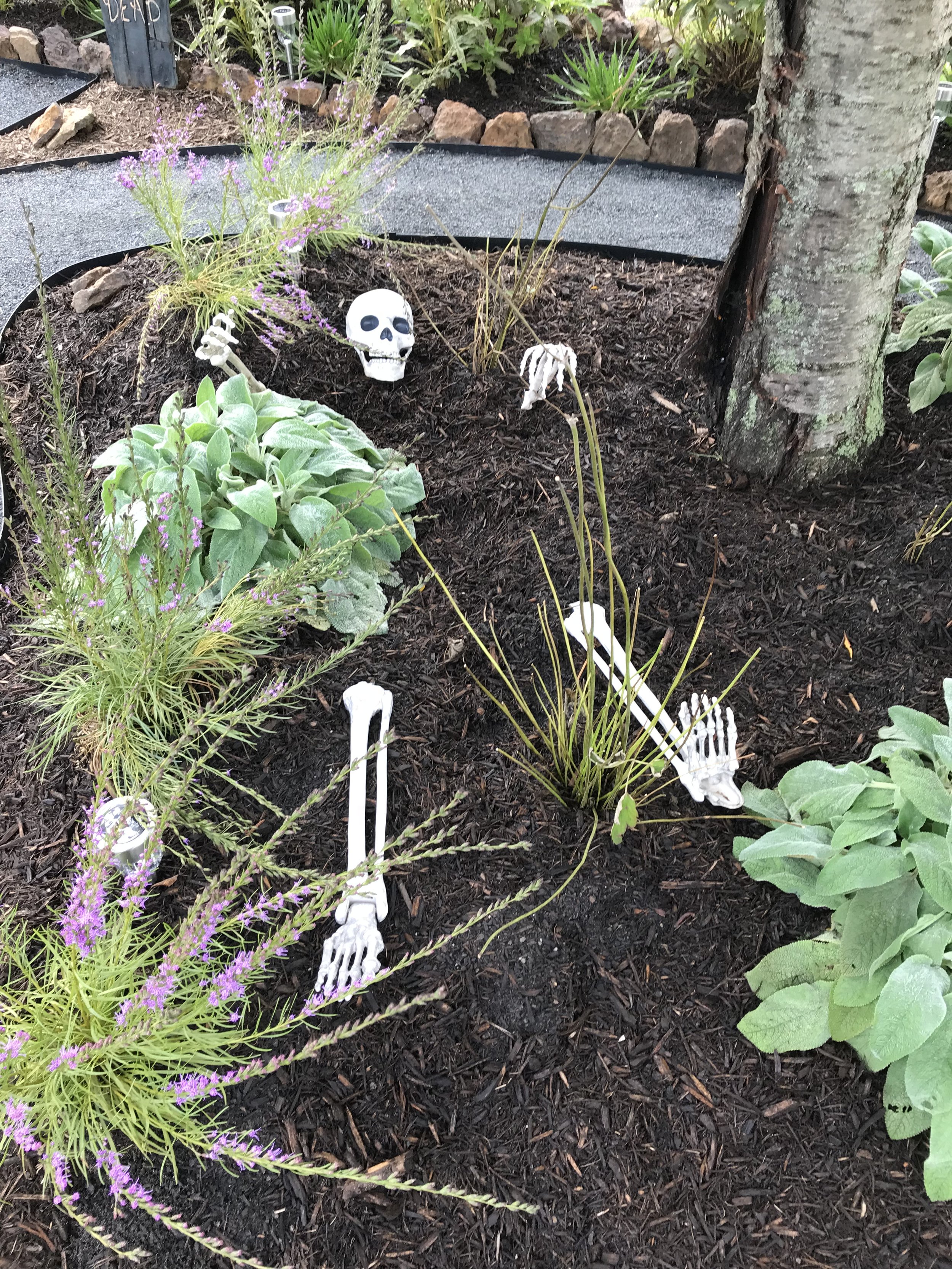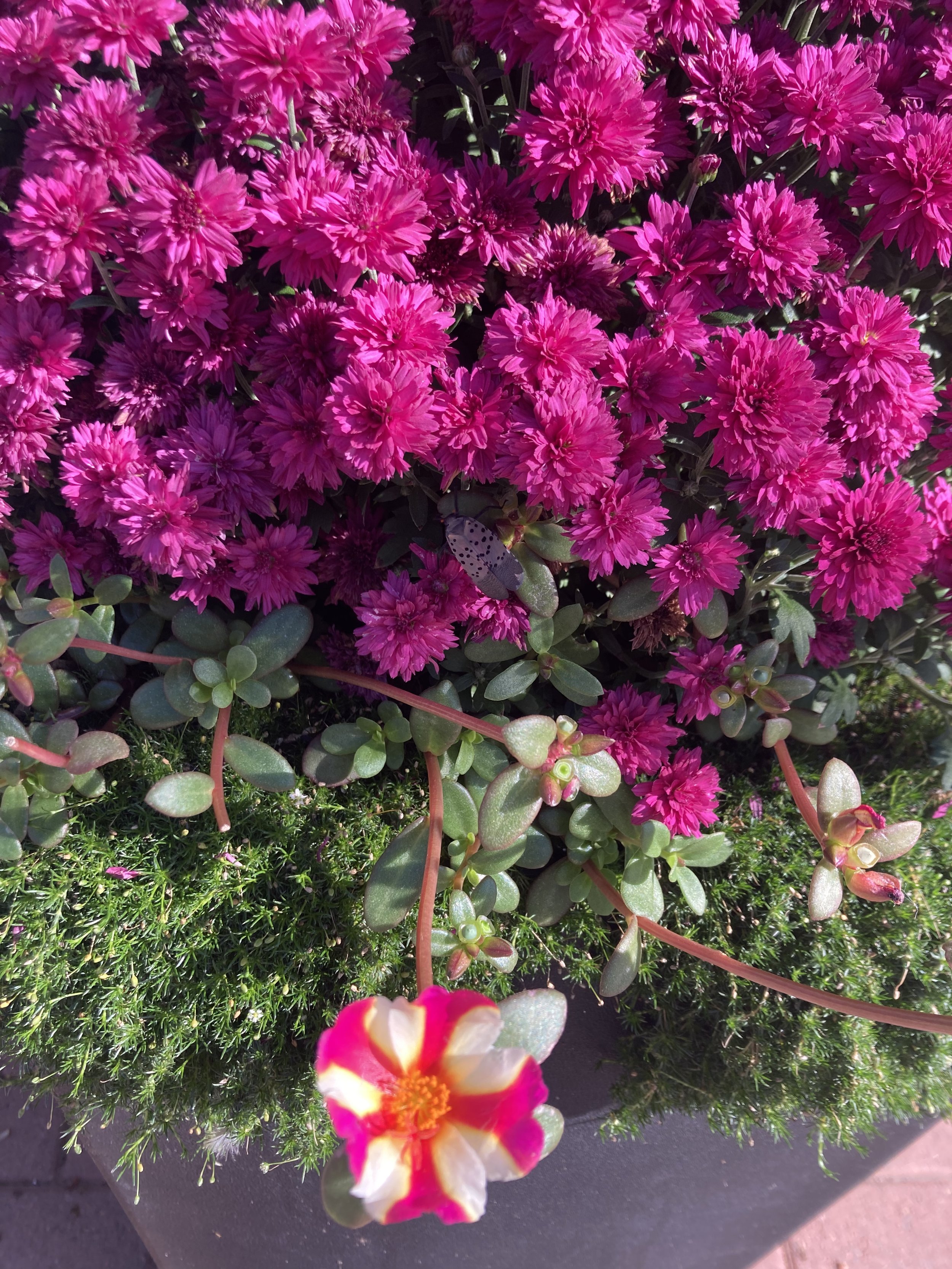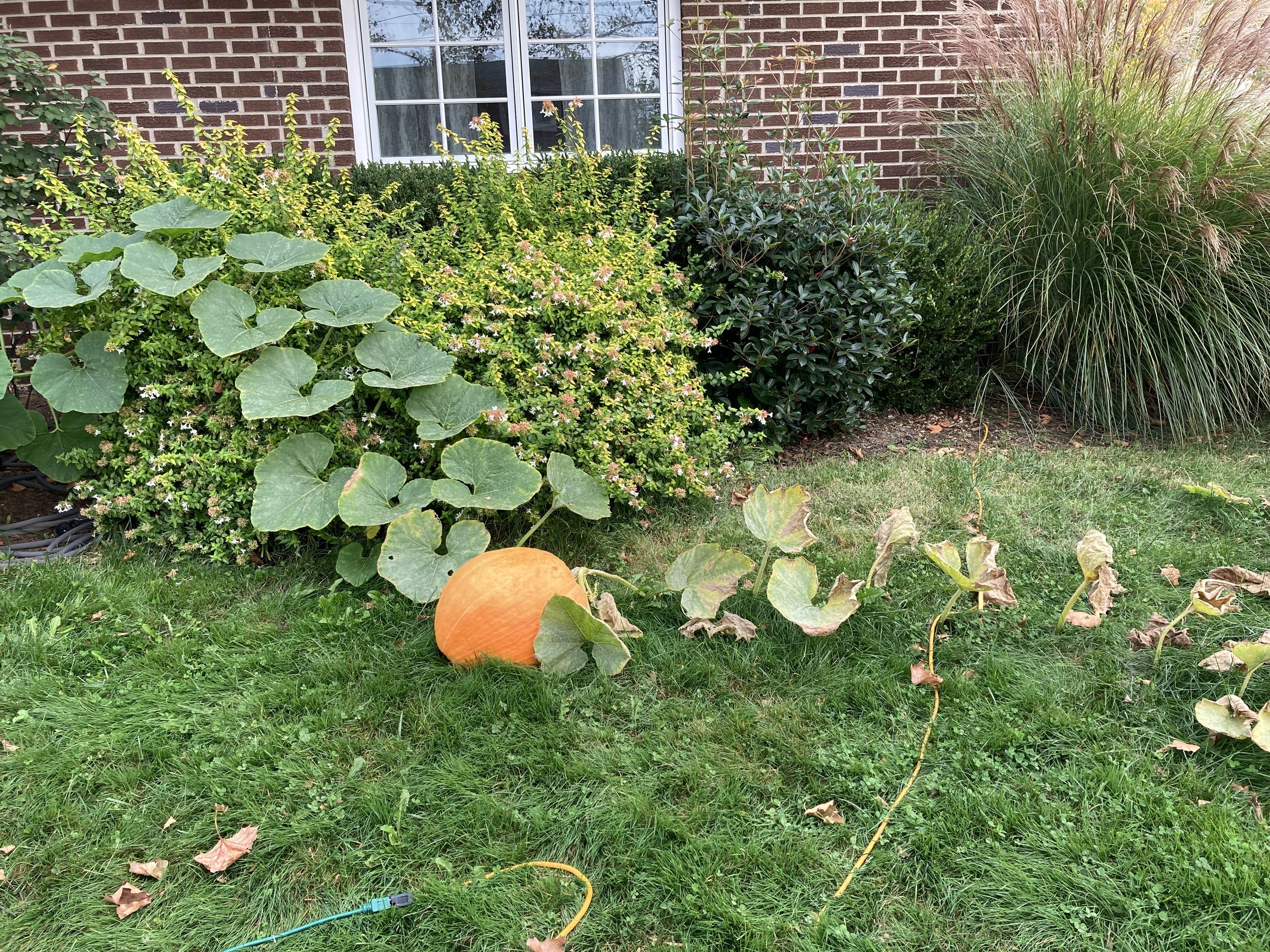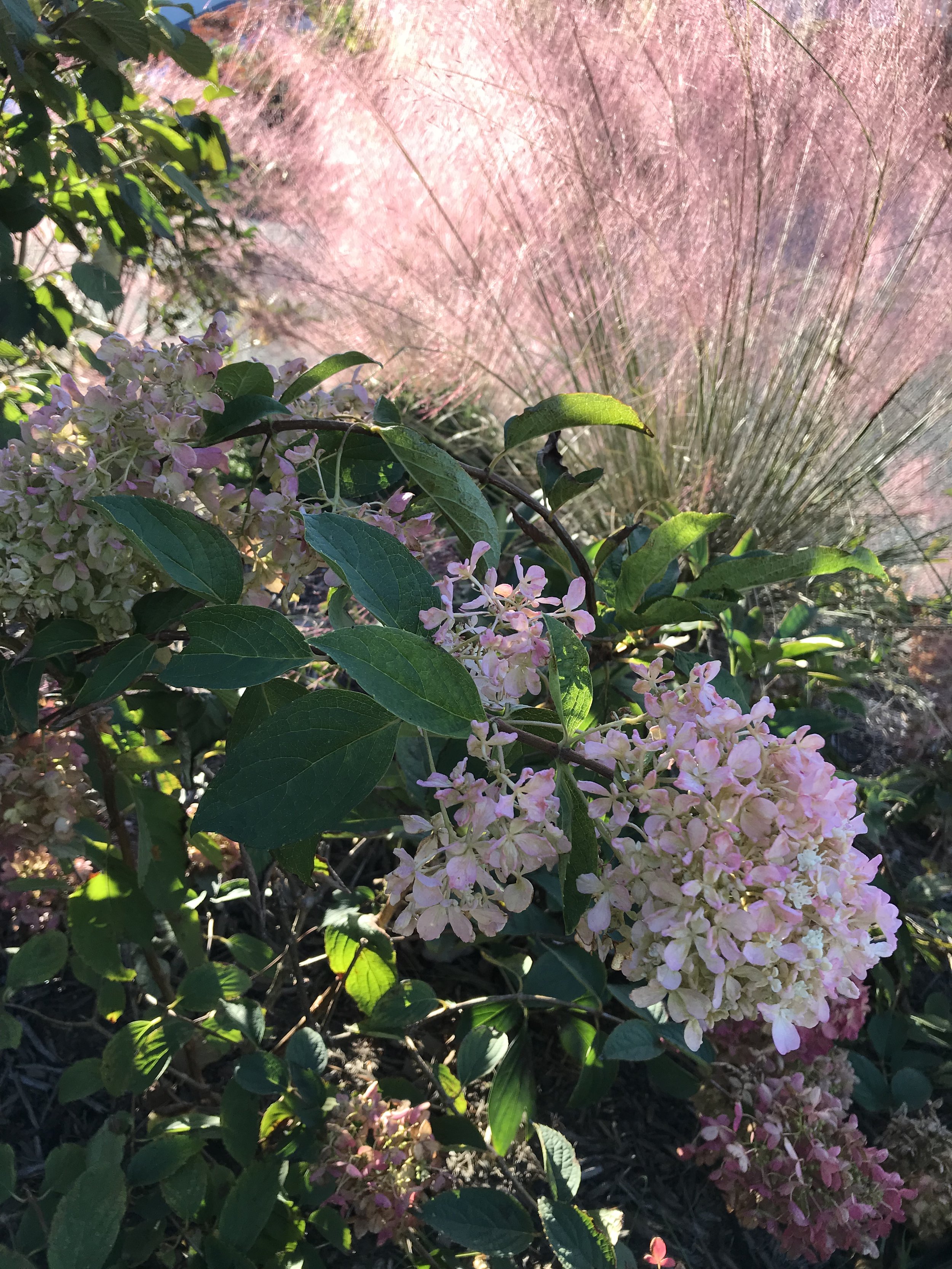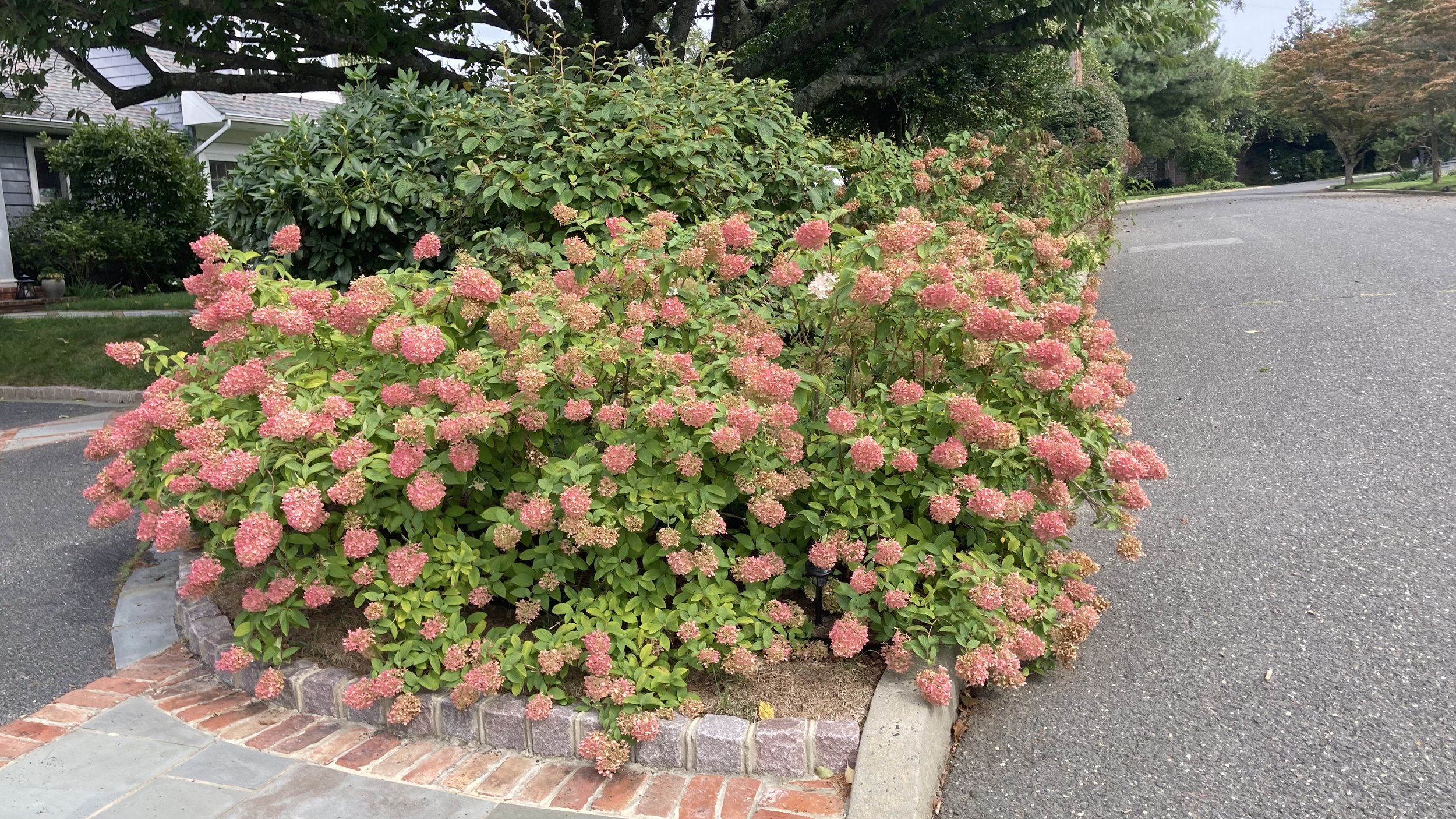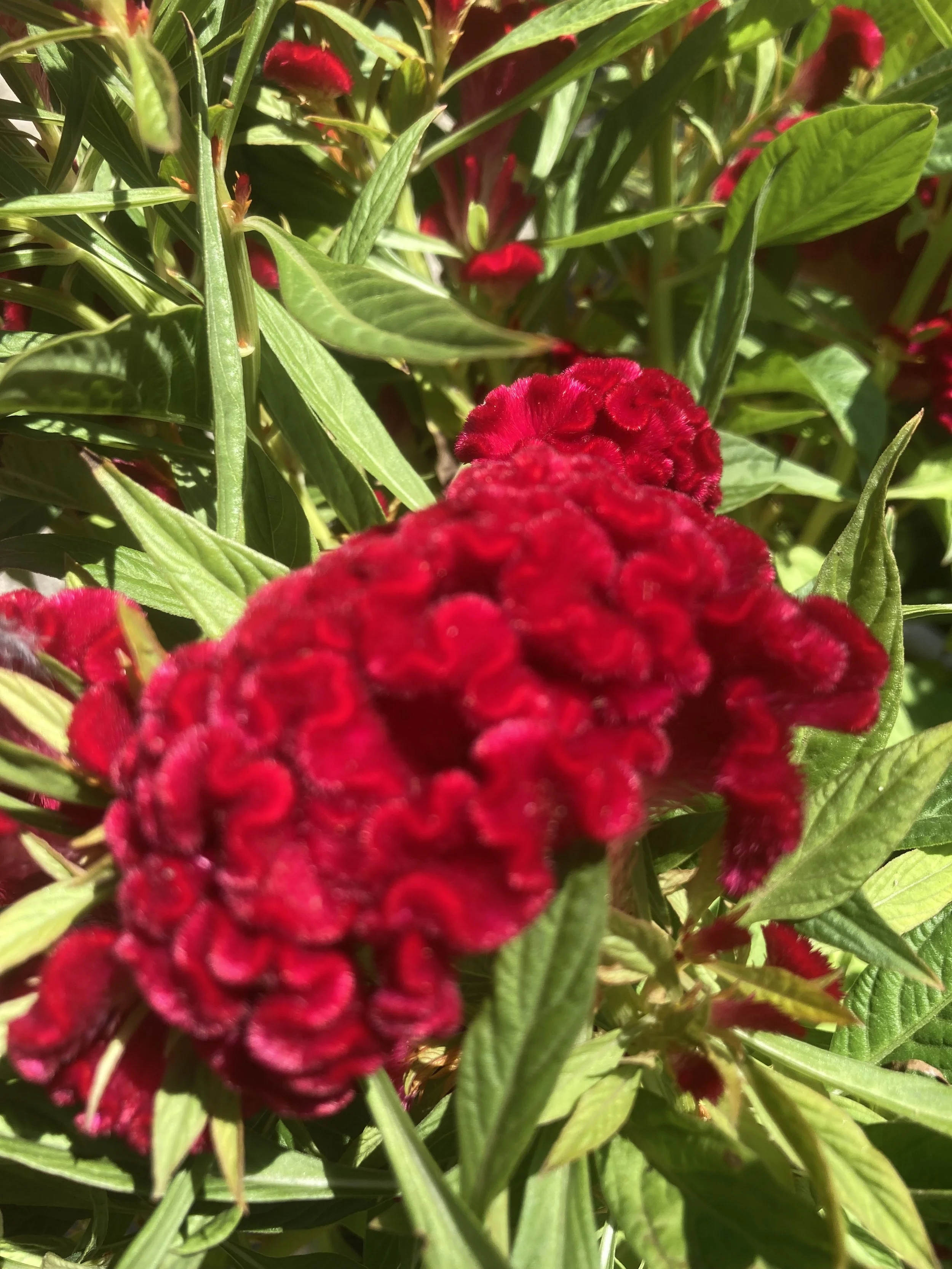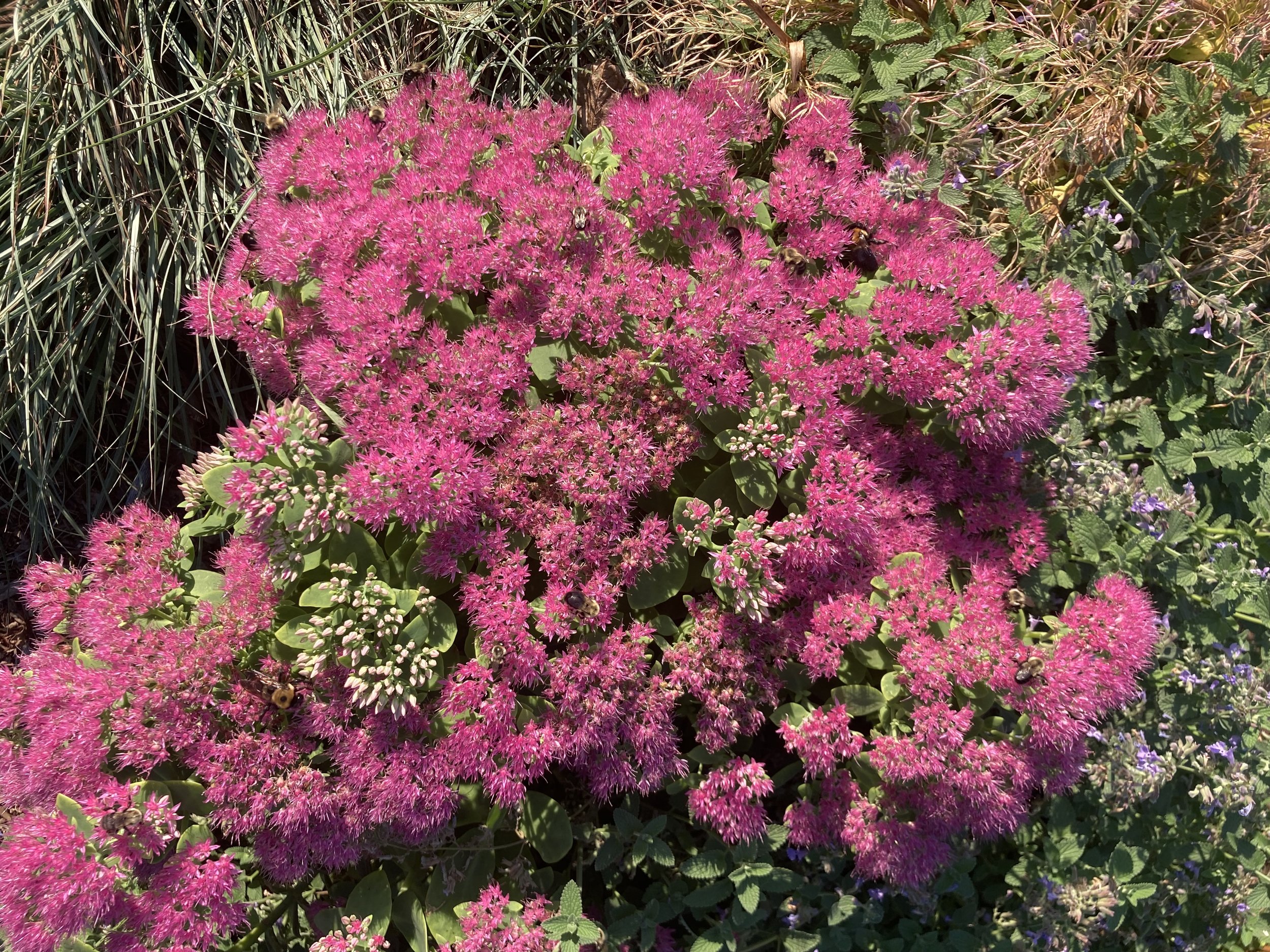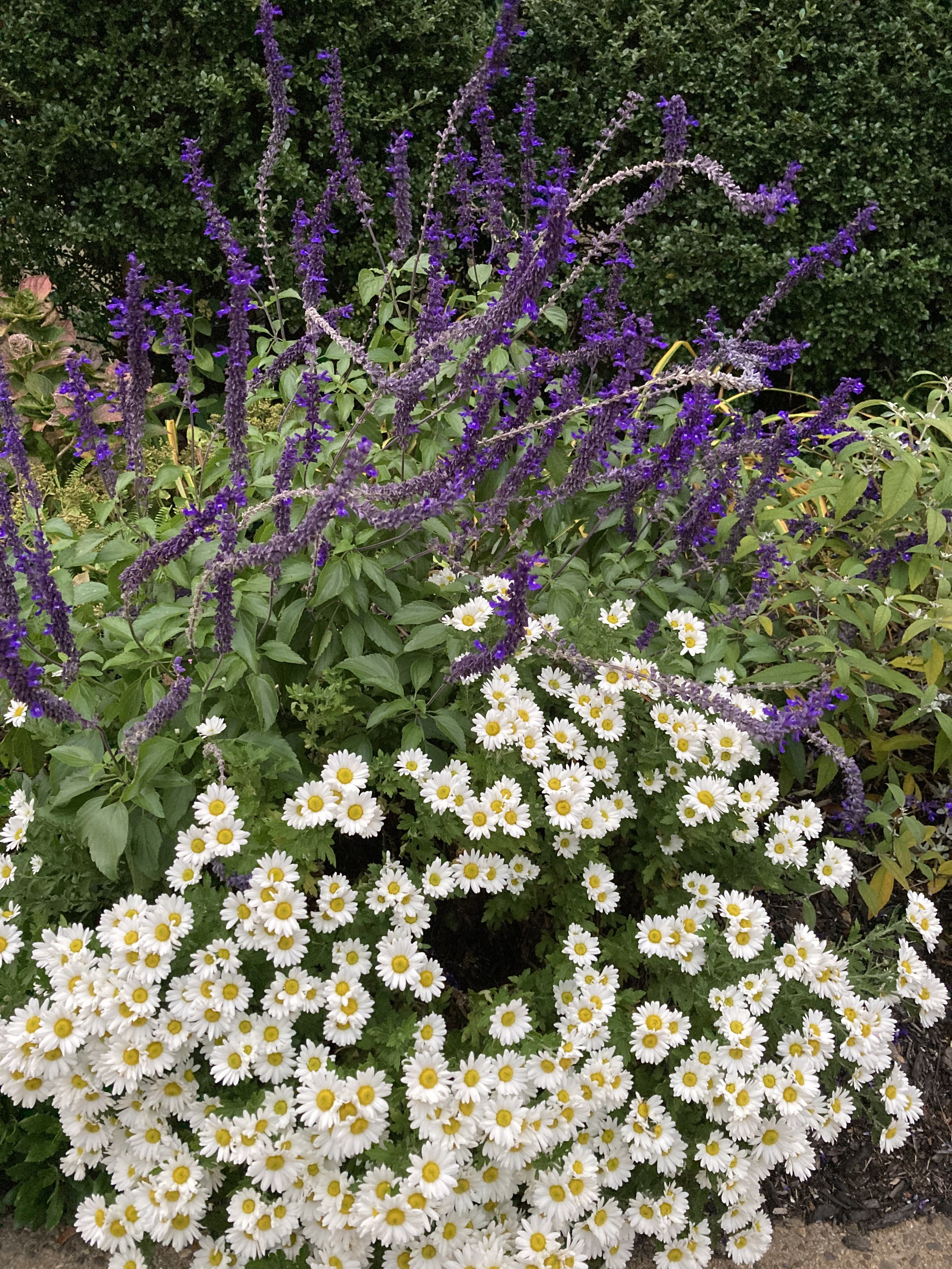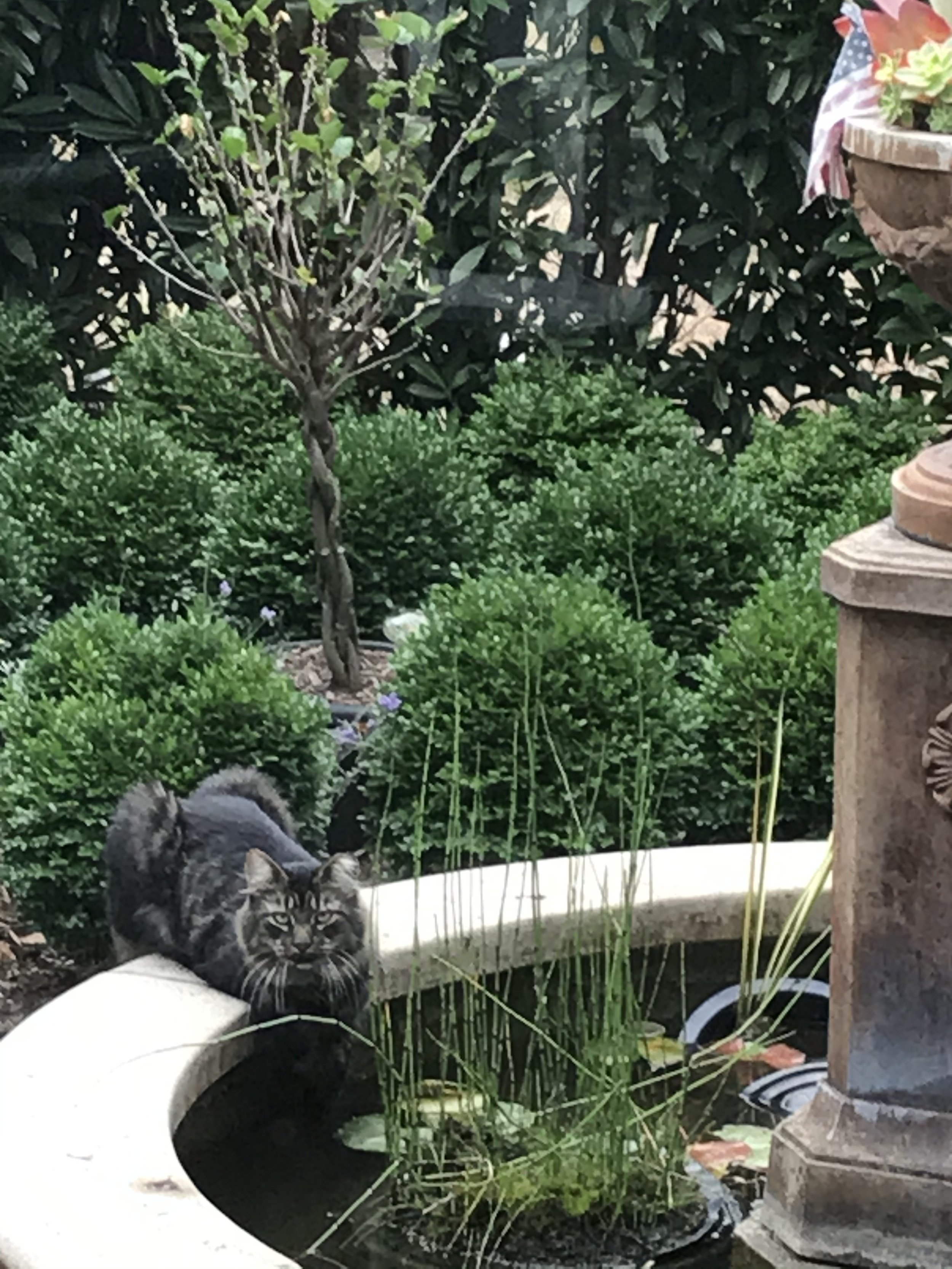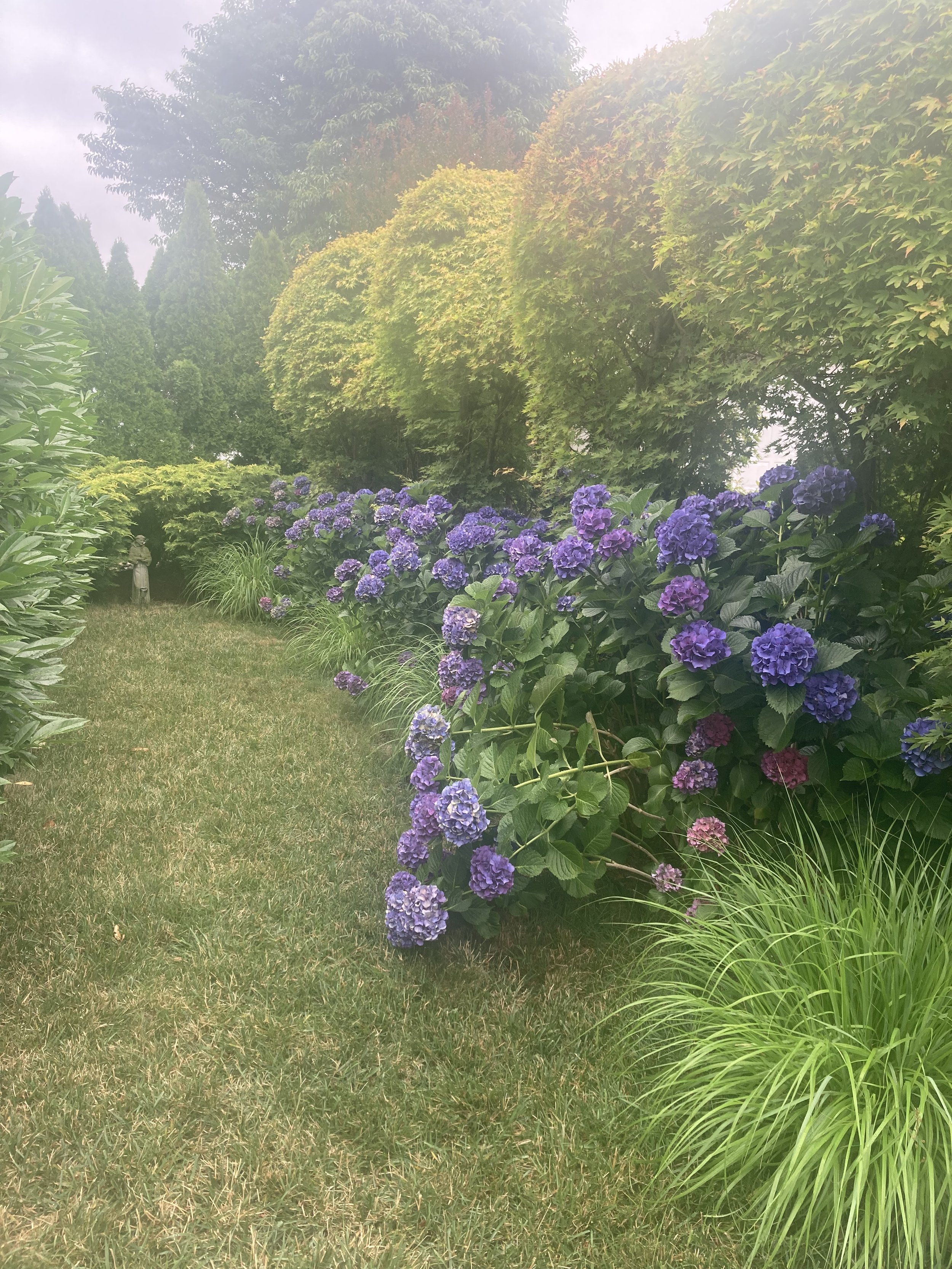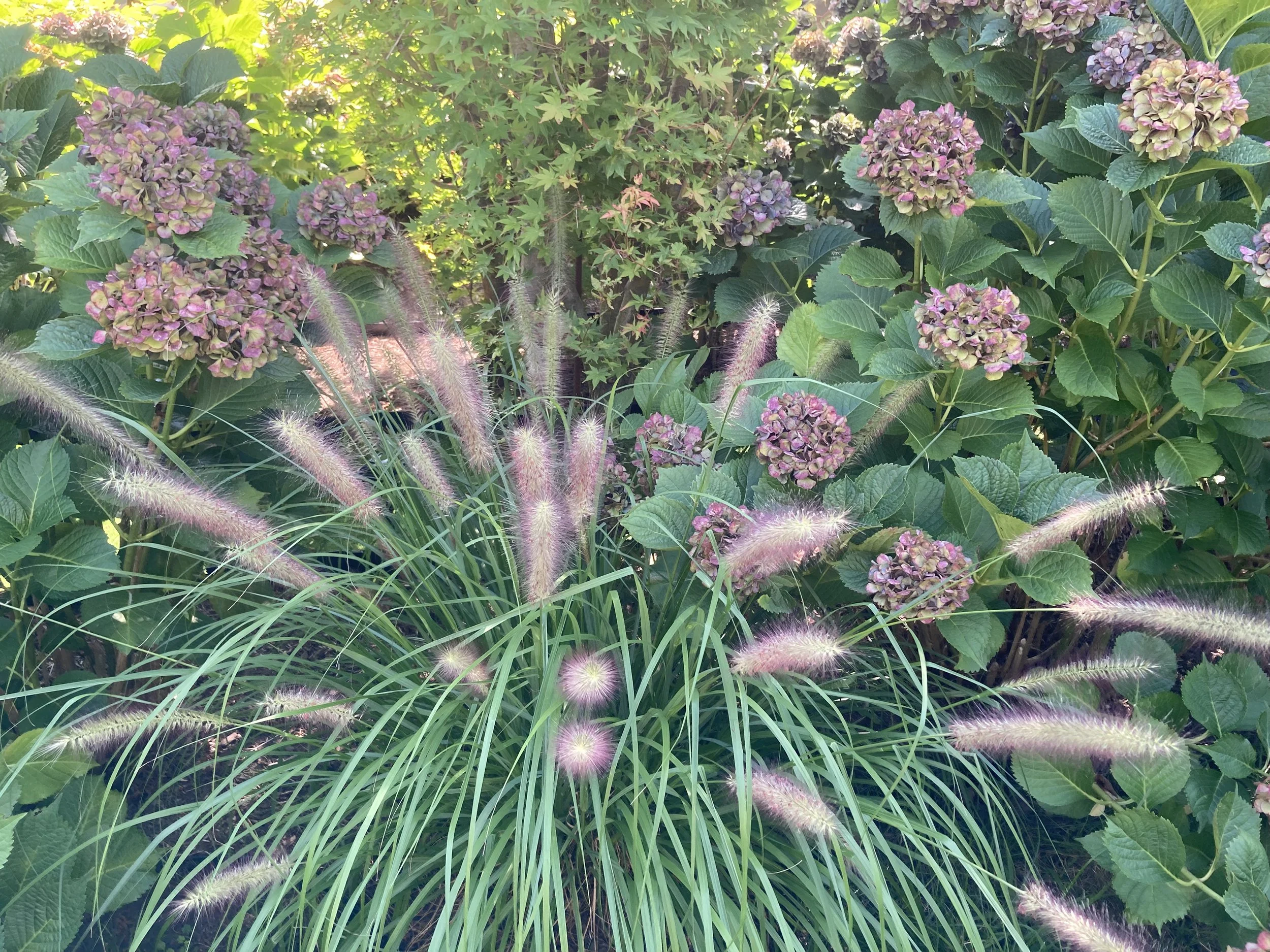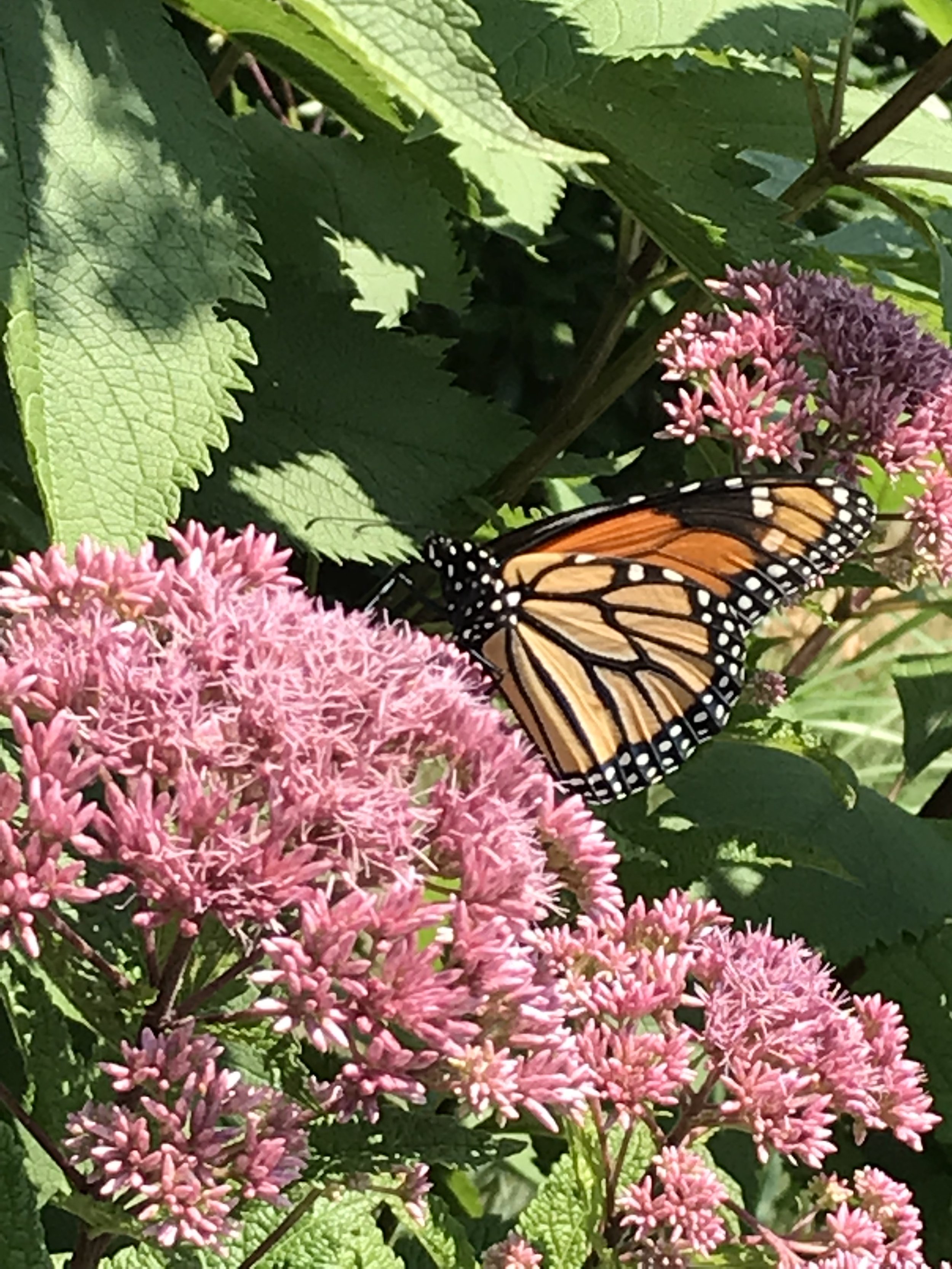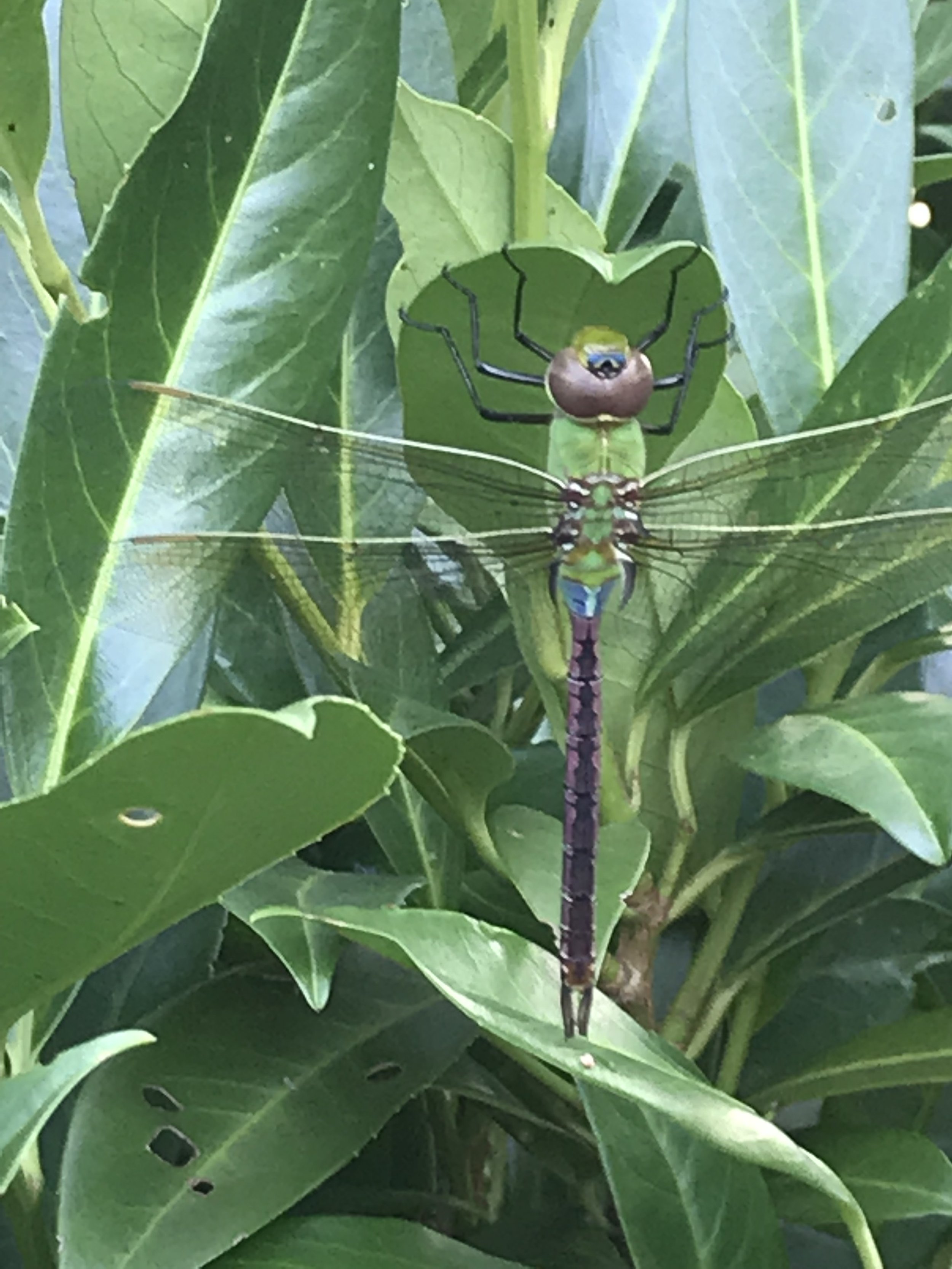Fall into Natives for an Autumn Garden Tour
We’re honored to have been invited to showcase our gardens as part of a “Fall into Natives Garden Habitat Walk” to benefit our local Arts Alliance.
In preparation to welcome our guests this Saturday, October 12th, there were the extra-nice things I wanted to do but also there’s the seasonal tasks that we’d do regardless even if we aren’t hosting an environmental Habitat Walk.
So I got to thinking two things: Why a garden tour in October?! And then, why not share a smart gardening guide with helpful seasonal tasks and tips for your Autumn To-Do list?
The Habitat Walk we’re hosting is part of an afternoon walk of a number of home gardens in our lovely town where we’re blessed to have a country house.
Nestled atop the marina with views looking across the Bay to Gotham, Brooklyn, and Long Island, I’ve cultivated our gardens and my clients’ as part of my Duchess Designs horticulture and garden design work for more than 20 years.
Since I first launched my garden design business, I’ve been a passionate advocate for Native Plants. They are better for a holistic gardening life and a sustainable, “best gardening” practice.
Good for us, our plant and animal community, and the planet.
And hopefully, we can help raise funds for the Atlantic Highlands Arts Alliance. I volunteer at the Gallery.
From our incredible Habitat Walk manager, Marilyn, who organized the garden tour with grace and patience and style, here was the overview and link you can follow for a kind of digital garden tour:
Wild about Atlantic Highlands and the Atlantic Highlands Arts Council are thrilled to share with you:
10 Habitat stops: The Arts Council (Headquarters: Exhibition and Handouts) and 9 UNIQUE GARDENS
Each FLOWER icon will link you to a featured garden. Clicking on an icon will provide you with the address as well as a narrative and several photos of each garden.
Our Self-Guided Garden Tour Map (not to scale)
Saturday’s October Garden Tour features Self-Guided, is not only a benefit, but is also framed as an opportunity to encourage others how they might achieve an environmentally-friendly garden habitat ~ and become certified.
We did.
Our fancy certification plaque now rests proudly atop one of the garden’s statues.
Autumn Aesthetic
For me personally, I was glad to have the opportunity to help elevate folks’ garden aesthetic to truly embrace an “All-Season” garden.
What does that mean?
As I shared with our enthusiastic garden-sprite of an organizer, Marilyn, far too many think of our gardens as tropical and/or only summer blooming places filled with lots of color. While all that is undeniably great, there is also the sensual, seasonal pleasure of appreciating one's gardens brimming with sensual beauty—and wildlife—in every season.
Seasonal changes in their plants mean that while one plant is coming up, another is beginning to celebrate its dormancy–or going to sleep. Our favorite natives look great even as they complete blooming and morph into their next seasonal stage. We can all benefit from modifying our garden aesthetic to embrace the decomposition stage.
Plus, the decomposing perennials pair so well with the annuals that will continue their hort couture beauty walk until frost.
Autumn and Winter Gardens possess an ethereal beauty given the position of the sun, so that when light hits the gardens it is nothing short of transporting:
And sometimes, if you’re observant, you can also discover some of the oddities that pop up, especially given the weather vagaries as a result of climate change.
There’s a spring bloom on, or a last-gasp of a summer flower juxtaposed with a fall perennial. Or…. something even more curious…
Rhodie Blooming in Fall!
Fall’s Fashionista Plants
Of course, there are plenty of autumn-blooming plants: Anemone Sedum, Fall-Blooming Azalea and Camellia, Rosemary, Ornamental Grasses, Joe Pye Weed, Toad Lily, Dahlias, Asters, Cockscomb, Callicarpa, Montauk Daisies; Hydrangea cultivars ~ I adore my Bobo Hydrangeas and their ombre color show of white to pink to rose…
Also, be aware of perennial plants with striking fall color. For example, the golden foliage of the Amonsia. While the pretty blue spring flowers make this Bill’s favorite, the fall’s glorious, sparkly gold is the envy of plant lovers.
There’s still more to enjoy in the autumn and winter gardens ~ if your garden design includes good design and complementary hardscaping.
We love our water garden that is hugged by evergreen cherry laurels and boxwood parterres. I add tropical hibiscus in the summer for that punch of color but all-season interest is created with the strong lines of stone and plants.
Likewise, the Arbor Garden’s passage is always romantic and mysterious because the Coral Bark and Red Twigged Dogwood bark changes to hot reds when the weather gets cool. The borders are a rich blend of decomposing hydrangeas and ornamental grasses.
The St. Francis Rock Garden is a treat for the eyes with its mini succulents and ornamental grasses and well, rocks and stones. It retains its charm in every season. As does the terraced Red Shade Garden
What Are the Garden Tasks for Autumn?
Now is the time to improve your garden’s health and looks. And it’s so much cooler now working :)
What to do:
Weed, weed, weed. Remove spent leaves of summer alliums for a refreshed, clean look.
Compost, compost, compost.
Amend your soil with compost and mulch. And leaves: free compost!
Plant your spring bulbs.
Plant your garlic.
Plant trees and/or shrubs.
Prune back spent perennials. Phlox, monarda/bee balm, and yarrow can be trimmed back to almost ground level. But I leave their heads till spring.
Later in the season after frost nips the annuals, remove.
Leave the leaves. Rake them into your garden beds for good, natural, mulch. The critters overwinter here. Think lightning bugs, moths, ground-nesting bees (important pollinators), Eastern Swallowtails and other butterflies love the leaf litter!
Clean up after seasonal storms. I’ve had to remove lots of spent leaves and other plant detritus due to recent storms that blow all kinds of things into the beds…
Divide Perennials.
Edge the garden beds and borders
Update or Start your Garden Journal to record what works and what doesn’t. Revise your Garden’s master plan.
Continue to harvest your edibles!
Sow cool weather crops.
As Margaret Roach, A Way to Garden and New York Times garden columnist advises: “DON’T DEADHEAD FADED perennials, biennials and annuals if you want to collect seed (non-hybrids only) or let some self-sow. Nicotiana, annual poppies, larkspur, clary sage, tall verbena (V. bonariensis) and many others fall into this leave-alone group. So do plants with showy or bird-friendly seedheads, like coneflowers, some sedums, clematis and grasses. And some perennials are actually in their prime right now.”
This piece of sound advice is a critical element to a true native garden aesthetic. Embrace the faded perennials that our pollinator friends need. You’ll love the look ~ and the show.
We can all embrace our very own, native, natural habitat. The National Wildlife Federation advocates our ability to support birds, butterflies, bees, frogs, that is a source of food water and cover for them; that conserves water and doesn’t rely on pesticides. It’s fun and healthy for all of our living communities. Get certified. It’s fun.
Please enjoy the glamour of your seasonal garden.

